Under the microscope: Australian National Road Series Part II
The financial challenges associated with domestic calendar
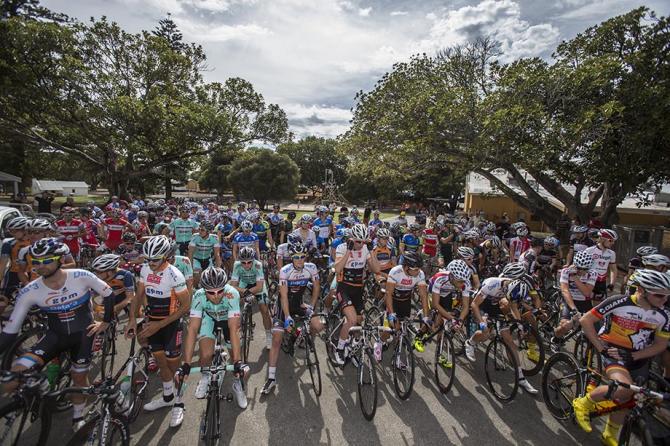
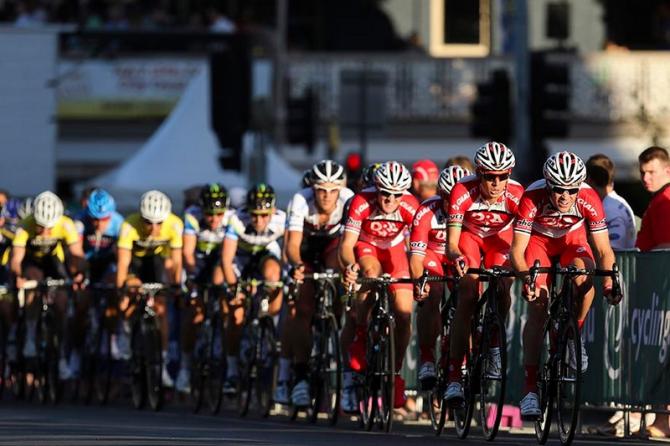
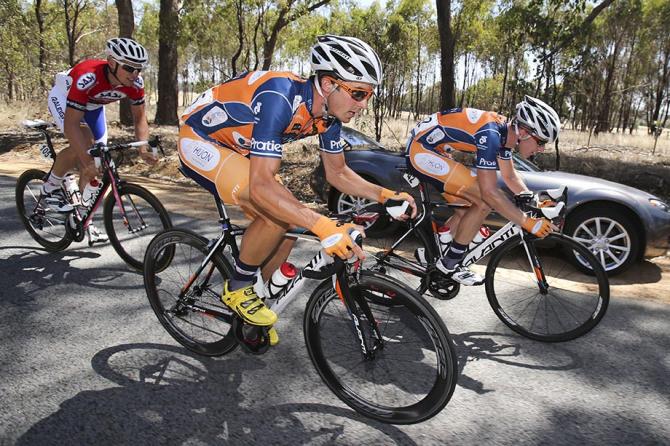
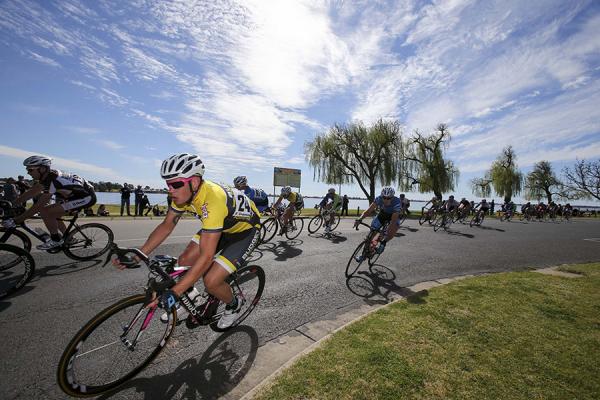
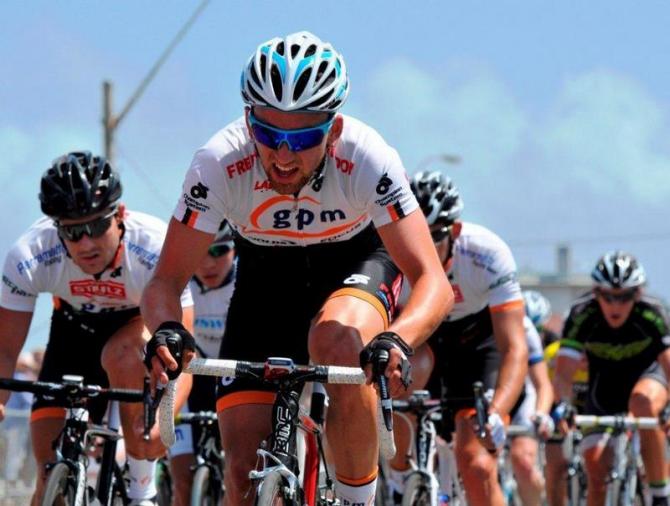
More teams, more riders will contest the Australian National Road Series (NRS) in 2013 than ever before but with this increased participation, also comes more events spanning both coasts. Broadly speaking, growth generally is the result of success - but at what cost? In this final instalment of Cyclingnews' two-part look at the realities of the national domestic calendar Australian Editor Jane Aubrey looks at the financial challenges associated with the most-anticipated season to date.
The 2013 NRS will consist of six combined men's and women's events with three stand-alone women's and eight stand-alone men's events, with new tours in Western Australia and another in South Australia. In total the women will contest nine events - up from six in 2012 - totalling 27 days of racing while the men will race 14 events - up from 12 last season - equalling 50 days of racing. There is also a record amount of teams set to contest the NRS with 33 men's and 15 women's.
The buck stops... where?
Among the measures to lift the standards within the NRS this season, has been paperwork usually seen at UCI Continental level and above in the form of standard rider contracts and a team budget template which all had to be completed and returned to Cycling Australia by March 1. The rider contracts were borne out of the collapse of the Eclipse Pro Cycling program which ran two teams, the senior RBS Morgans - ATS team and under-21 development squad backed by Cycling Australia Jayco-HoneyShotz, that contested the NRS in 2012. Eclipse management cited financial reasons as their primary rationale for discontinuing, explaining: "The decision to discontinue is a commercial one, as the team is a non-profit operation."
Cycling Australia's National Manager - Road, Sean Muir, speaking to Cyclingnews about the introduction of the financial checks and balances, said that Cycling Australia "found that not just in those teams but in a number of teams, the professionalism in regards to the management of the team wasn't where it should be.
"We just want to make sure that each team sits down, targets however many events that they're planning to do and we want to see that they put down the expenditure side of things and at the end of the day that money is covered under the income side of things," Muir continued. "We don't have our financial team go through these things line by line, at the end of the day, they outline their budgets, expenditure and income and we sit down in our small team in the office and see if it's feasible and if it's not, we look into it further."
When there is only a handful of salaried riders in the NRS, it becomes apparent that professionalism is perhaps more of an ideal than reality. And that's despite the fact that many of the competitors are considered full-time athletes.
Get The Leadout Newsletter
The latest race content, interviews, features, reviews and expert buying guides, direct to your inbox!
That some teams may have been lacking with regards to their financial management did not come as a surprise to Stuart Shaw, winner of the NRS in 2007 who, at age 35 is heading into his ninth season in the domestic competition. This year, having ridden with one of the founding teams of the NRS since 2006, Drapac, Shaw moves to Suzuki Bontrager where not only will he ride for the team, but also use his considerable experience to advise the team on how to best focus their efforts financially, and that means which events to race.
"The reason I went to Suzuki Bontrager was because they've been around for a while and they're able to operate within a budget," he told Cyclingnews. "With some clearer drive they can do better for their partners which is not easy when you've got such a spread out country and spread out races - and we've got a men's and women's team which is a challenge."
Team budgets in 2013 range from around the $1 million-mark to anywhere under the $50 000-mark dependent on team size and the amount of events raced.
Consider that a more centrally-located event on the east coast, albeit in a regional area as most of the NRS events are, could cost a team as much as $15 000 to attend and it's easy to see how quickly budgets get chewed up throughout a season. Given the first event of the year takes place in and around Perth, Western Australia - the Tour de Perth, an additional event for 2013 - and that the majority of teams are based on the east coast, teams were potentially facing a huge outlay if it were not for the generosity of the race organiser, CIC Events. Teams travelling from overseas or the eastern states were provided with transport upon reaching Perth, and as a "worst case scenario" accommodation was heavily subsidised by the race organiser.
A decision was made by Cycling Australia's Road Commission that a maximum of 14 events for the men, and 10 for the women's teams would be sustainable in 2013. With a number of minimum standards being applied to events, Muir says that the NRS is not yet at the stage where demands can be made regarding prize money, race organisers have been placed on notice with an eye to 2014.
"We will just have to look at any other applying events taking into account which events were up to scratch this year," he said. "We want to make sure that we do have the best events around Australia on the National Road Series calendar."
Getting bang for your buck
In his dual role with Suzuki Bontrager, Shaw will not only look at the quality of racing on offer, but also put events under the microscope for their cost-effectiveness. As an example, the team was offered a ride in the UCI 2.2 New Zealand Cycle Classic in late January but declined on the basis that the numbers would not add up. Suzuki Bontrager would need to pay for flights and then outlay considerable cost for accommodation at the race across the Tasman. Following the experience of the Jayco Herald Sun Tour earlier in the month, where any expenses were heavily subsidised and there was significant media exposure - something the team successfully tapped in to with guest rider Jordan Kerby wearing the yellow jersey - it was a case of the New Zealand Cycling Classic offering "no value" to the team. Suzuki Bontrager spent $5000 to race the Sun Tour, which covered race entry, accommodation, meals and petrol. It will be the best money spent by the team all year, and yet while NRS teams were competing, it was not an NRS event.
So what does a sponsor of a team in the NRS get in return for their support when there is little to no media coverage outside cycling media and therefore exposure, other than what many teams have relayed to Cyclingnews as a "feel-good factor"?
The course of Cyclingnews' enquiries revealed that the answer was dependent on who one was asking.
Cycling Australia Commercial Director Michael Edgley flatly denied the message being passed on by the teams.
"If you sponsor an NRS team, now in 2013, if you compare what it was like four years ago, now every race has media production, every race has live social media updates," he told Cyclingnews. "You then have the opportunity to have the team ride in the national championships which has live television. The media coverage of the NRS, you guys [Cyclingnews] do a great job, SBS is doing a better job than what they were; there is greater coverage for a sponsor now as part of the NRS."
While Edgley conceded that with increased and more wide-spread events on the NRS calendar this season, came greater expenditure by teams but suggested there was a significant upside.
"If you talk to people I think the teams have greater opportunity to generate revenue than what they've ever had," he said.
"The extra events on the calendar this year for both men and women I think are both attributable to the profile of the NRS. I believe there's an increased focus from Drapac and Genesys on doing well in the NRS. Drapac previously have disappeared for certain times during the year because they've had European ambitions and stuff. Their focus on the NRS is testament to the profile and prestige that it's developing."
Huon Salmon-Genesys Wealth Advisers have already announced their intentions to make the jump from a UCI Continental to Professional Continental team in 2014, with sports director Andrew Christie-Johnson telling Cyclingnews that without UCI-sanctioned racing currently all-but absent from the Oceania calendar, their hand is effectively being forced. While Cyclingnews didn't entirely agree with Edgley's statement regarding the ambitions of Drapac given the evidence that has been readily available, what wasn't expected was the extent of team founder Michael Drapac's frustration at Edgley's quote.
"I choose my words very carefully," Drapac, Australian cycling's largest benefactor outside of Gerry Ryan told Cyclingnews. "I find it extraordinary that Michael Edgley makes comments about my motivation and what my team is doing without ever speaking to me about it. From a professional point of view... I'm offended and I'm actually quite surprised that if he's as professional as he makes out to be, that he could make statements about a team likes ours without ever having spoken to us."
Edgley did not respond to Cyclingnews when asked about his dealings with Drapac.
"We're racing in Asia as much as ever," Drapac continued. "We've chosen not to ride Europe because it's not doing anything for our sponsors at the moment and to fill in the gap, so that for 2012 we elected to do more of the NRS racing but, is that because NRS racing provides a return? No, it's not. If you were to say that for the amount of racing that we do on a calendar, and if you were to apportion the cost, you might say that the cost of doing the NRS would be 40-50% of our budget which would be in the hundreds and hundreds of thousands [of dollars]. I spoke to Jono [team manager Jonathan Breekveldt] and Agostino [Giramondo, directeur sportif] and we had a close look at the media exposure. We wouldn't return 10% of what we spend on it; it's not even remotely close to returning the capital outlay let alone a commercial return. Anyone suggesting there is a commercial return is living in noddy land."
What Drapac would like to see from a financial standpoint, is a "neutral return" - investment back through media exposure. At present, apart from side-of-the-road spectators, the NRS has little immediate hope of gaining the attention of your once-a-year viewer of the Tour de France - traditionally when interest in cycling in Australia is at a peak. The Subaru sponsorship of the NRS, which was recently extended until the end of 2014, funds the Cycling Australia orchestrated media production around events - via a dedicated website, TV production for internet highlights or SBS coverage.
"All we can do is continue to grow and develop what our communications channels are," explained Edgley. "The people who are on the side of the road who touch the NRS are a good example of the type of people that we can reach for the first time or in a frequent way. It's not easy. We don't have a marketing budget that allows us to mainstream, primetime promotional activities. We've got some realities about what we do.
"There is no silver bullet; you've just got to keep applying a positive attitude to it."
Looking to the future
Given that the NRS is essentially a development series, a level playing field is not something that would be easily attained. As it stands, there is a direct correlation between team budgets and results and that's unlikely to change. Where inroads have been made however to try and 'level the playing field' however, is in the numbers that constitute a team. For the men a maximum of eight riders can make up a team and for the women, five. But whether eight is even too many, has been up for consideration with teams debating the matter at the annual Road Forum held at the national championships in Ballarat in January. Muir explained that like many elements within the NRS, this is another delicate balancing act.
"We've obviously got a couple of things to think about," he said. "The development teams who can't afford to send eight [riders] around so we can't have the number too high or else they'll just get blown out of the water before the event even starts. On the other end we have Continental teams who have 16 riders on their roster and we want to see those guys ride in NRS events as much as possible, plus you've got other larger teams around the country like Satalyst Giant, Trent Wilson [GPM Data#3] has got a fairly big team as well - it is a bit of a juggling act."
Shaw is just one in favour of smaller teams, having come full circle from 2005 when he started and racing in teams wasn't allowed and punishable by fine.
"Having smaller teams at races and making it affordable for teams to one - get to more races and you can rotate your roster and two - when you have got less control, it makes for more entertaining racing, like at the Sun Tour," he said.
"If people like Drapac, Genesys and Budget are investing more money, then in some ways they deserve to win and there's no problem with that. But I think it needs to be made more viable for other teams to have that hope to step up."
Drapac's set up is unique and highly admirable, with his riders paid to continue their studies at university. He too, is calling for a financial revolution.
"There are so many bike riders [aged] 21, 22, 23 who are spending their whole year training and riding the National Road Series with the dream that maybe someone will spot them and they'll go to a team overseas, all those kids are riding for nothing," he said. "You talk about a level playing field. People should be able to do this and make some sort of modest living."
But what would it take for such a revolution to occur? Drapac is adamant, and has been for many years that the NRS needs to be integrated into the lone Australian UCI WorldTour event, the Tour Down Under, perhaps with the top team gaining a slot on the start list. It's a suggestion that divides the peloton and gives rise to the often-mooted argument that there is an unwritten favouritism among national selectors for athletes that have come out of the Australian Institute of Sport, over those that have gone down an alternative route to the top. Drapac relayed the following conversation between himself and Cycling Australia CEO Graham Fredericks that took place several years ago.
"I will quote Graham Fredericks he said: 'We don't want to have an elite, elite National Road Series, we want a National Road Series for the local riders'," Drapac explained. "I'll never forget this until the day I die, he said: 'Michael, you've just got to get it into your head that our priority is AIS athletes'. He said 'Our funding depends on it'."
Cyclingnews asked Fredericks for his recollection of the conversation and he was of the belief that Drapac's version of events was largely inaccurate.
"Our commitment to the series is unquestionable," he said. "We have worked tirelessly in recent times to secure a naming rights partner in Subaru and an SBS broadcast deal to help deliver greater exposure for riders and sponsors. At our expense we have recently set up our own in house events team to help manage the planning and implementation of the series and this year we have recruited Scott Sunderland as Race Director.
"In recent years the series has fostered riders of the calibre of Richie Porte, Nathan Haas and Steele Von Hoff who have used it as a springboard to join European professional teams and represent Australia."
Cycling Australia's new head of Marketing and Communications Ben Godkin while able to assist Cyclingnews with our enquiries, did suggest that it "would be counterproductive to publish" Drapac's quotes.
The recent report into Cycling Australia's governance highlighted the role of Australian Cycling Events Pty Ltd, a subsidiary of the national body which now runs five events on the NRS calendar, previously operated by John Craven's Caribou Publications at a considerable cost.
Under the heading 'Financial recovery and commercial joint venture' the report undertaken by former New South Wales Supreme Court Judge Justice James Wood said that: There are some financial risks in event management, as well as a potential for conflicts of interest when CA seeks to gain a financial return from events where it also has responsibilities as the 'regulator' of the sport.
Apart from the five NRS events, Australian Cycling Events Pty Ltd also runs the Cycling Australia Road National Championships, and it was there that an aforementioned conflict of interest took place. Virtual leader in the KOM competition in the men's road race, search2retain powered by heath.com.au's Cameron Bayly was eliminated by commissaries with just a handful laps to go despite not being in danger of being lapped out on the Mt. Buninyong course. The decision allowed race winner Luke Durbridge to take the prize along with his green and gold jersey. Should Bayly's team had lodged an appeal against the decision of the commissaries, they would have had to have done so in writing within 15 minutes of their rider being pulled from the course. A somewhat preposterous proposal in reality and even more so when the Chief Judge's ruling is final with no recourse for appeal. According to Edgley, in line with Wood's recommendations, "the events program is a big part of our future." In another blow for the search2retain outfit, and an example noted by Drapac was that Neil Van Der Ploeg, fourth rider across the finish line and the best of the NRS finishers against UCI WorldTour representatives, missed out on selection for the UniSA - Australia composite team which competes in the Tour Down Under. It's a conspiracy theorists delight.
Drapac is firm of the belief that nothing will change until Cycling Australia's funding model undergoes a significant shift away from the current whereby Olympic and World Championship medals and results correlate to government funding.
"There's never been any interest from Cycling Australia for any person, and this is why people like Richie Porte and the others have been prejudiced over the years, it's never been in the interests of Cycling Australia to choose athletes that weren't tagged as AIS athletes.
"The conventional system of the AIS, the boys' club did not give rise to Peter McDonald, did not give rise to Darren Lapthorne, did not give rise to Nathan Haas, or Steele Von Hoff, or Will Clarke or Richie Porte," Drapac continued. "The real point is that what that shows is if grass roots cycling in Australia was properly supported and cultivated, it's been proven that the non-institutional, conventional model gives rise to some outstanding athletes and if there was more money, just even 10% of the pie, went to developing that side of the sport we would see far more Richie Porte's and Nathan Haas' etc etc.
"Cycling prospers in America, in the UK, in France and Spain and Italy because of private money - it doesn't prosper because of government money. And yet here, the way it's engineered, it's designed to discourage private money because we're never going to get a fair go with any of our athletes, we'll never get a fair go, nor will anyone else for that matter."
National Performance Director Kevin Tabotta denies any suggestion that AIS athletes are favoured over non-AIS athletes.
"The CA selection process published on our website clearly states that we pick the best available riders to represent Australia on the world stage," he said. "We regard the NRS as an excellent forum for emerging riders to prove themselves and monitor each race accordingly. The selection of riders such as Adam Phelan, Tom Palmer and Campbell Flakemore to represent the country in Europe over the past seasons validates this point and we expect others to take a similar route to National selection in coming years."
Selection and creating an even bigger talent base aside, when it comes to the NRS, Shaw too believes that there is already an avenue to deliver a return to supporters, if managed correctly. However the future lies in the success of great governance, private funding, and lots of it.
"When cycling gets to the point in the NRS where you can get people to sponsor it who aren't just philanthropists, then that's when you know it's starting to be successful," he told Cyclingnews. "Once we can get a return for the sponsors then that's when we'll get paid. That's the reality of it. Whether it's fair or unfair, that's the way it is."
You can read Part I of this series here.
As a sports journalist and producer since 1997, Jane has covered Olympic and Commonwealth Games, rugby league, motorsport, cricket, surfing, triathlon, rugby union, and golf for print, radio, television and online. However her enduring passion has been cycling.
Jane is a former Australian Editor of Cyclingnews from 2011 to 2013 and continues to freelance within the cycling industry.